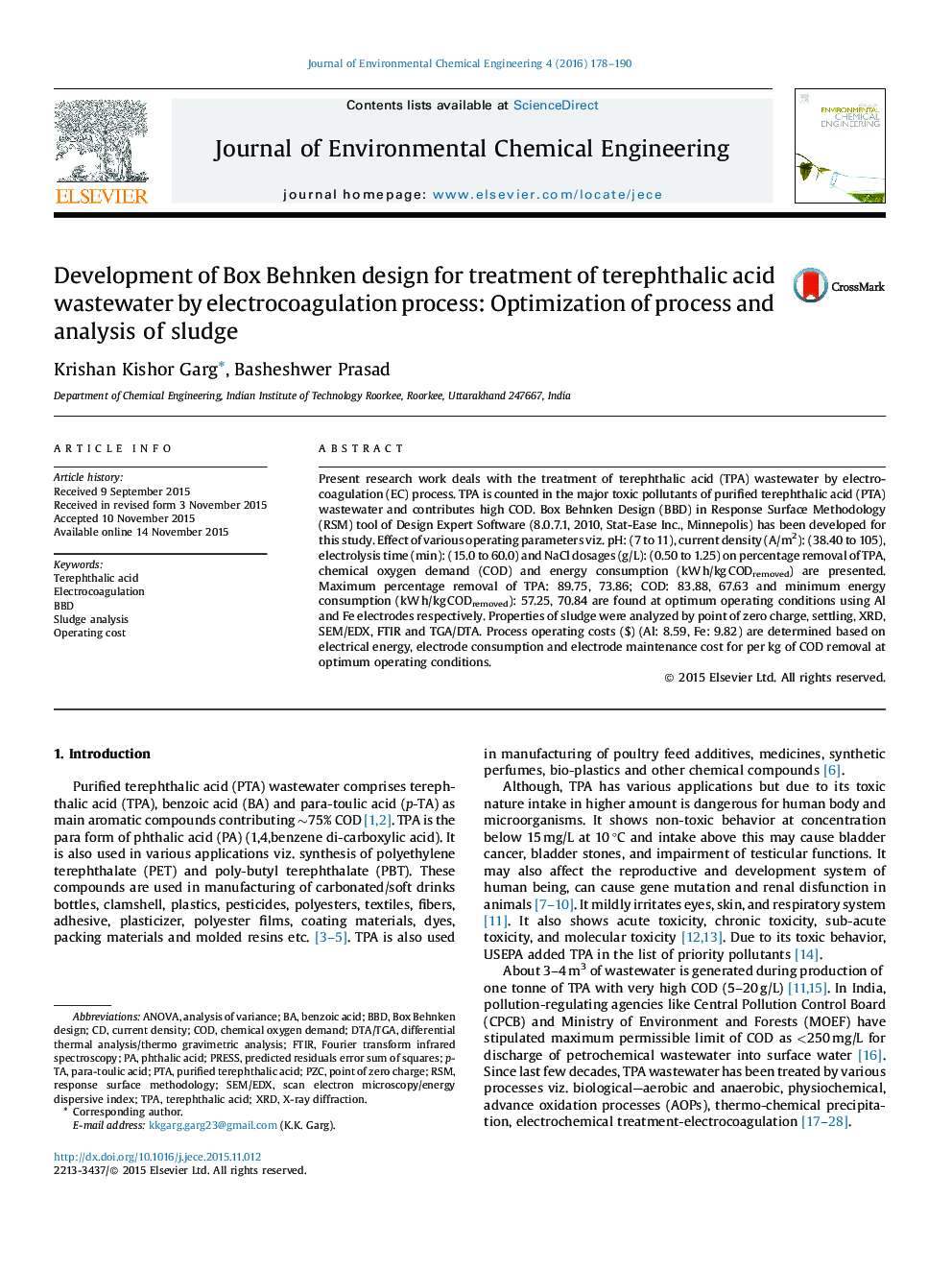| Article ID | Journal | Published Year | Pages | File Type |
|---|---|---|---|---|
| 221873 | Journal of Environmental Chemical Engineering | 2016 | 13 Pages |
•Al electrodes give higher % removal of TPA-89.75 and COD-83.88.•ANOVA analysis results shows good adequacy of the selected model.•Sludge exhibit carbonyl and hydroxyl group shows efficient removal of TPA.•Fe electrodes generated sludge shows better settling properties.•Energy consumption (57.25 kW h/kg CODremoval) was lower in case of Al electrodes.•Operating cost ($8.59) was lower in case of Al electrodes for per kg/COD removal.
Present research work deals with the treatment of terephthalic acid (TPA) wastewater by electrocoagulation (EC) process. TPA is counted in the major toxic pollutants of purified terephthalic acid (PTA) wastewater and contributes high COD. Box Behnken Design (BBD) in Response Surface Methodology (RSM) tool of Design Expert Software (8.0.7.1, 2010, Stat-Ease Inc., Minnepolis) has been developed for this study. Effect of various operating parameters viz. pH: (7 to 11), current density (A/m2): (38.40 to 105), electrolysis time (min): (15.0 to 60.0) and NaCl dosages (g/L): (0.50 to 1.25) on percentage removal of TPA, chemical oxygen demand (COD) and energy consumption (kW h/kg CODremoved) are presented. Maximum percentage removal of TPA: 89.75, 73.86; COD: 83.88, 67.63 and minimum energy consumption (kW h/kg CODremoved): 57.25, 70.84 are found at optimum operating conditions using Al and Fe electrodes respectively. Properties of sludge were analyzed by point of zero charge, settling, XRD, SEM/EDX, FTIR and TGA/DTA. Process operating costs ($) (Al: 8.59, Fe: 9.82) are determined based on electrical energy, electrode consumption and electrode maintenance cost for per kg of COD removal at optimum operating conditions.
